Equipment
TaylorMade launches M3 and M4 drivers that have a “Twist Face”
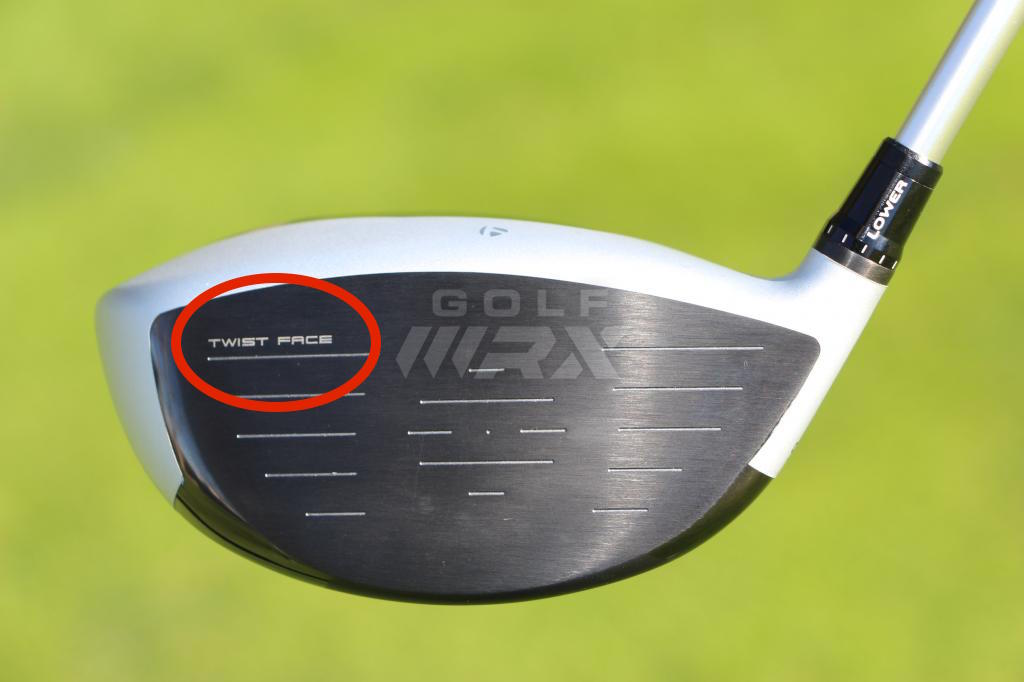
The photos that leaked of the M4 driver, and later of the M3 driver, showed a technology called “Hammerhead,” which we thought would be the most significant technology in the new M3 and M4 drivers. Ha, not even close.
TaylorMade’s new M3 and M4 drivers have what’s called a “Twist Face,” which means the driver faces do not have the traditional bulge and roll that drivers have used since 1888. Instead, they’re actually twisted. The high-toe portion of the faces are more open and with more loft than normal, while the low-heel portions are closed and have less loft than normal.
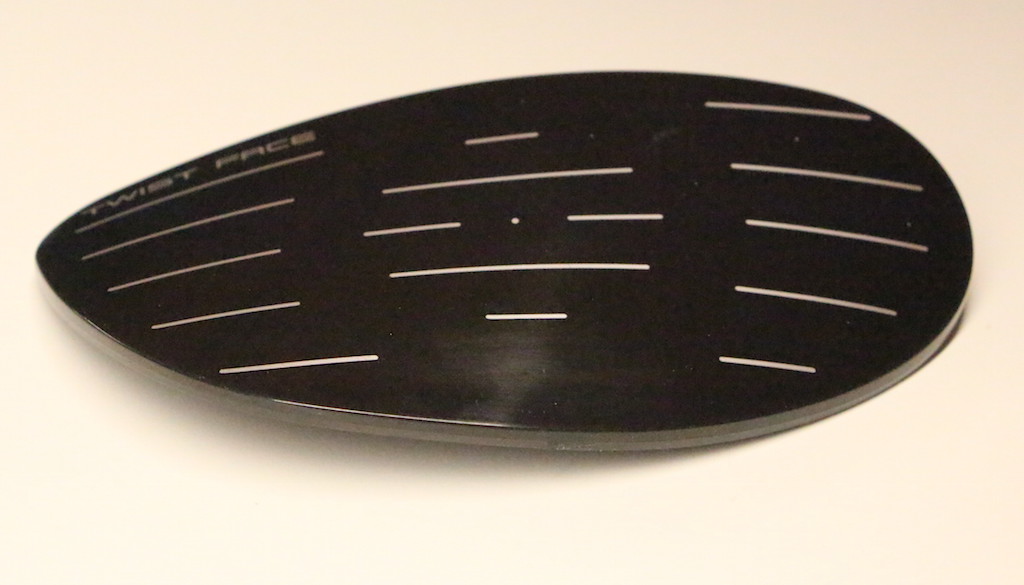
A plastic mock-up of TaylorMade’s new “Twist Face” exaggerates the design for visual display
“TaylorMade engineers discovered there was a flaw in the traditional bulge and roll.”
Why… why after over 100 years does TaylorMade think that bulge and roll is wrong?
Well, according to the TaylorMade team, the company studied “more than half a million shots” from golfers of all skill levels, using data recovery devices — for swing path, launch and landing location — to determine trends. What TaylorMade found is that shots struck on the high toe went 8 yards left of the target on average and with less spin than ideal (a hook), and shots struck on the low heel went 6 yards right of the target on average, and with more spin than ideal (a slice).
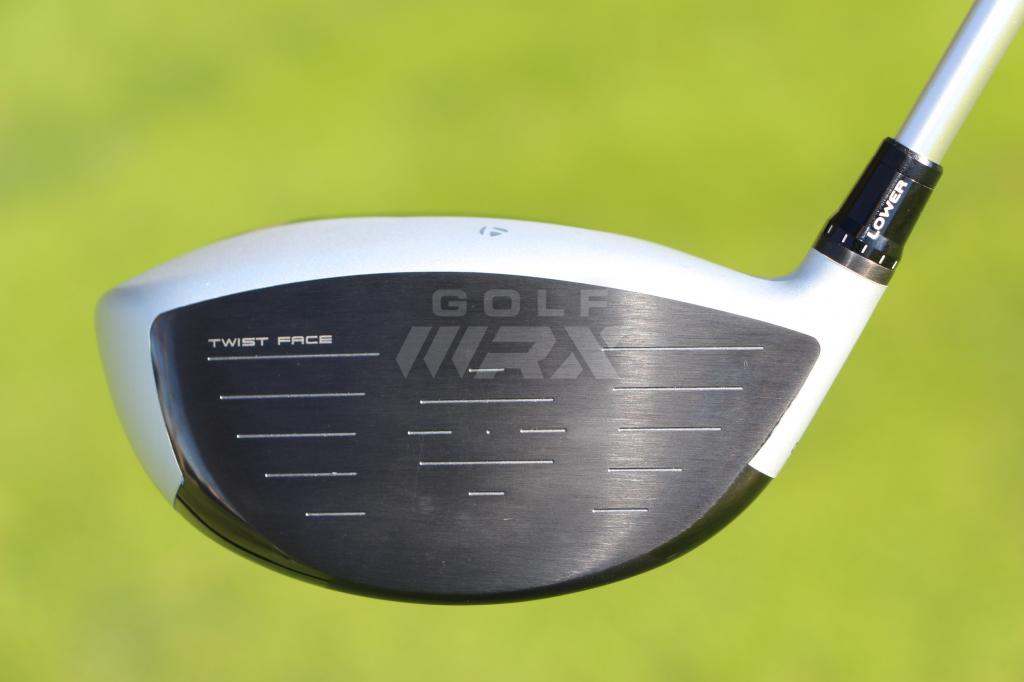
Normal bulge and roll uses curvature — straight across from heel to toe and straight up and down from top to bottom — in order to impart gear effect on the golf ball. That means shots hit on the toe should spin back to the left and towards the target line, while shots hit on the heel should spin back to the right and toward the target line. With a flat-faced golf club (or without bulge and roll), toe shots would go way right and heel shots would go way left. Bulge and roll was introduced to bring shots hit all over the face back to the target or the centerline.
TaylorMade’s findings, however, show that traditional bulge and roll, or at least the way it’s used by golfers in the real world, forces toe shots too low and left, and heel shots too high and right.
Brian Bazzel, the Vice President of Product Creation at TaylorMade, explains the phenomenon:
“Players over or under rotate at impact and the low heel to high toe impacts are in the rotation axis of the face closing. So if the golfer over rotates you hit high toe… under rotation leads to low heel. Players that create more droop can lead to slightly higher face shots and vice versa, but the primary driver of the impact location spread is do to face rotation.”
Bazzel joined our 19th Hole podcast to further explain Twist Face and what it does.
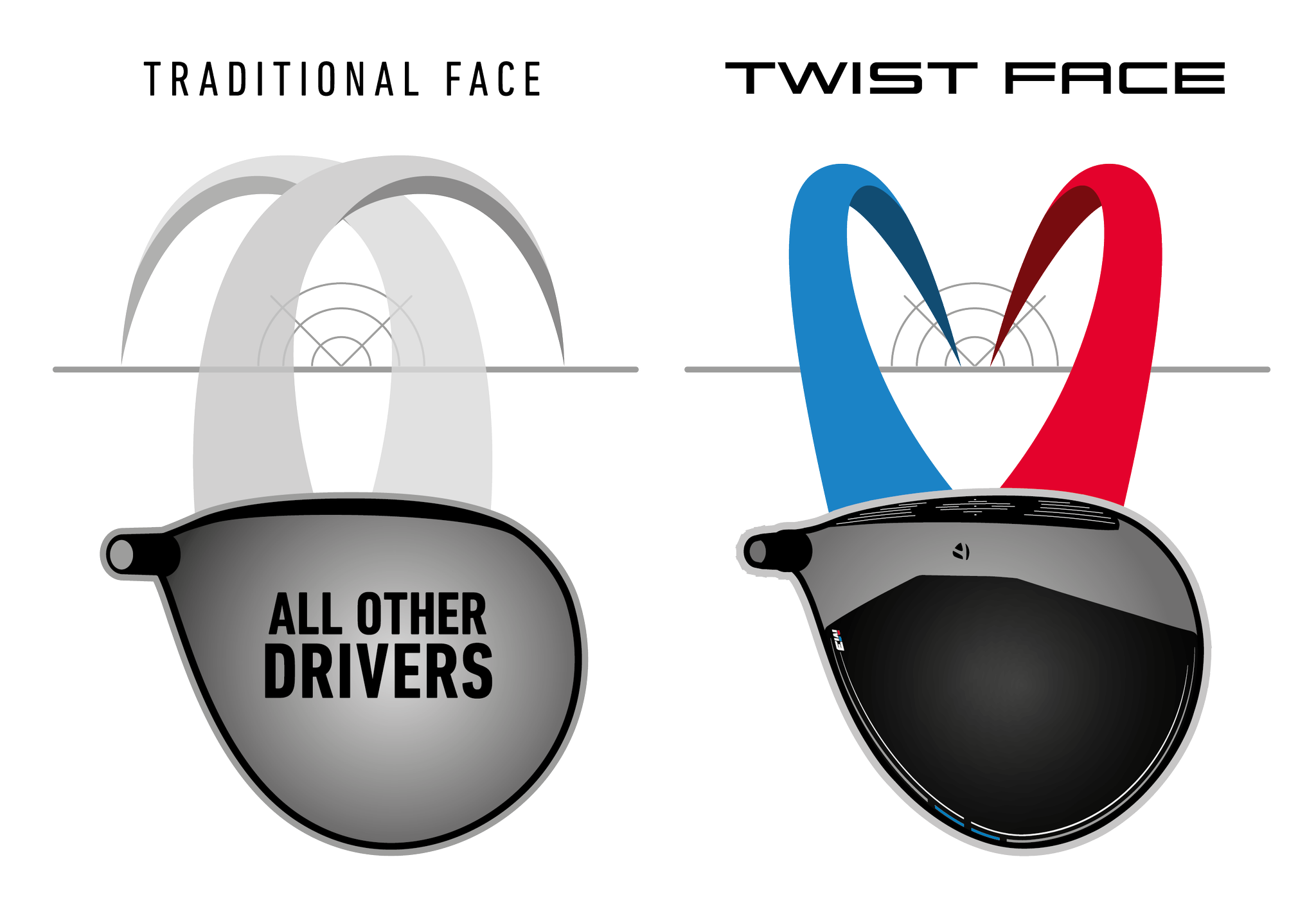
This graphic from TaylorMade simulates the difference between a normal face and Twist Face
So, the way golfers rotate the face, on average, leads to the overall trend of toe shots going low-left and heel shots going high-right. And it makes sense. Think about your latest round or practice session. When you hit the ball off the toe, it was probably high on the face, right? And your heel shots are probably low on the face. Seriously, when is the last time you hit the ball off the high heel? TaylorMade says that is due to face rotation, and it mends the trend by using “Twist Face.”
And what is Twist Face exactly? Bazzel explains again:
- At 15mm above CF (center face) and 15mm to the toe, the loft will be 0.5 (degrees) weaker and 0.5 degrees more open than standard bulge and roll.
- At 15mm below CF (center face) and 15mm to the heel, the loft is going to be 0.5 degrees stronger and 0.5 degrees more closed than standard bulge and roll.
In the end, TaylorMade says shots hit off the high toe will go 1 yard left of the target on average instead of 8 yards, and low heel shots will go 2 yards right of the target on average instead of 6 yards. That drops the differential on shots from toe-to-heel from 14 yards down to 3 yards, according to TaylorMade. Luckily, the design is unnoticeable from address — at least, unnoticeable to me. See for yourself…
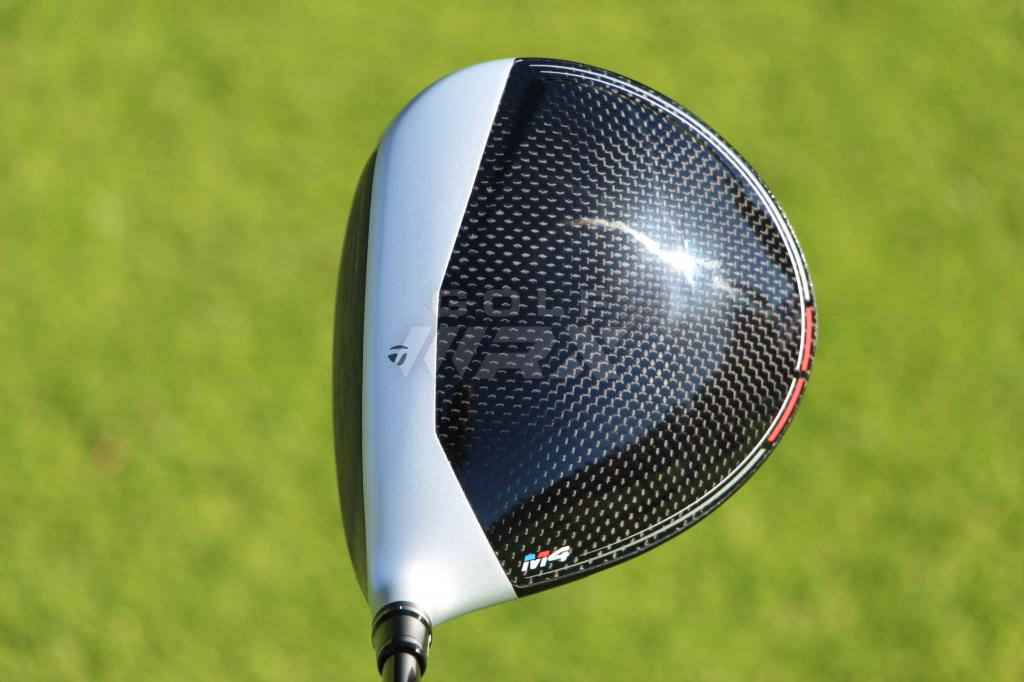
Note: While the new Twist Face technology is in the new M3 and M4 drivers, TaylorMade says it’s not ready to implement it into the new fairway woods or rescues; it needs more time for R&D, according to TaylorMade.
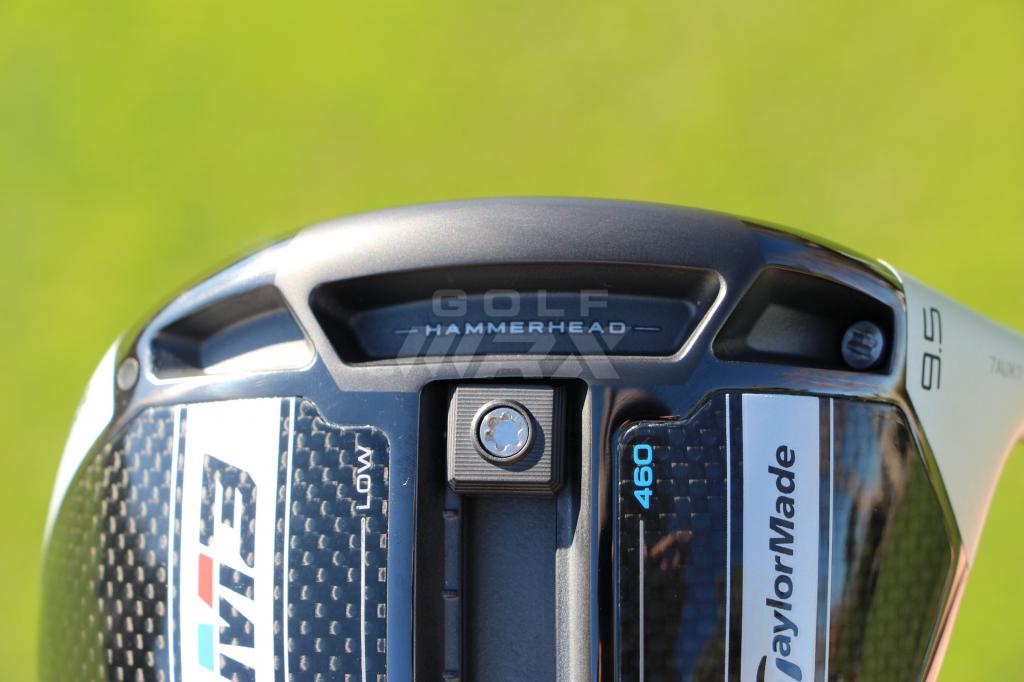
Additionally, TaylorMade has also introduced its new “Hammerhead” technology, as the leaked photos of the drivers have implied. The slot-technology, which is broken up into three sections, is in the soles of both the CG-adjustable M3 head, and the non-CG-adjustable M4 head. Since the speed pocket was divided into three zones, the length of the slot now stretches 100mm across the sole instead of 82mm in previous M2 designs; that leads to more forgiveness across the face. The ribs behind the face mean the face was able to made thinner for more ball speed, effectively making the sweet spot bigger. The center portion of the slot allows for greater ball speed on shots hit low on the face.
The hammerhead slot works in conjunction with the Twist Face technology, and the familiar inverted cone design used in TaylorMade drivers of the past, to boost ball speeds across the face.
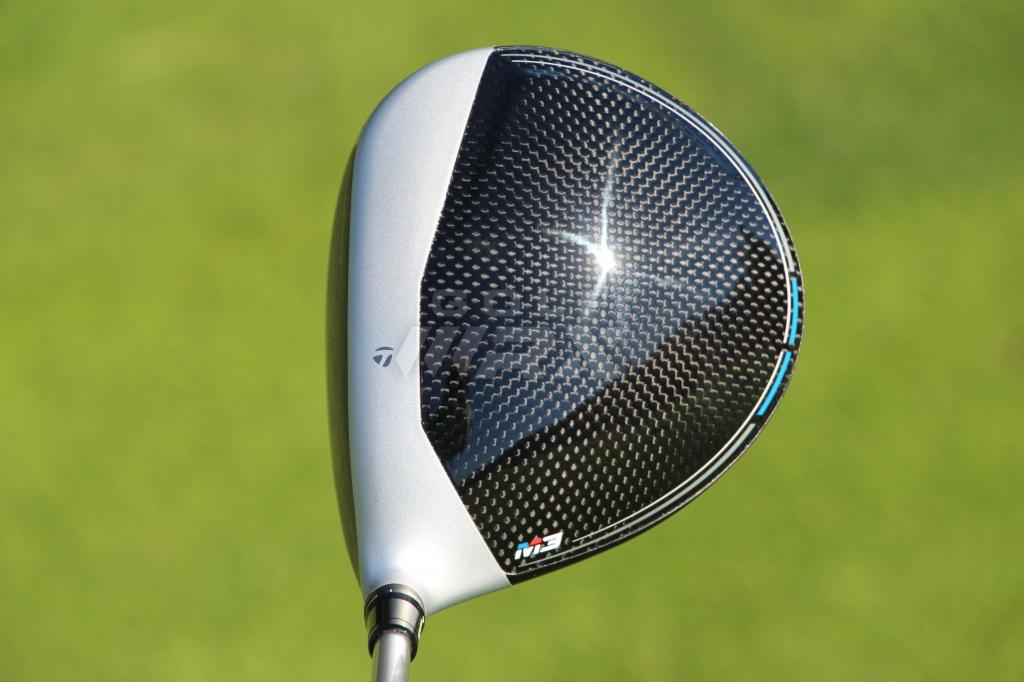
TaylorMade is also ditching the white, and going back to silver for the first time since the SLDR S release. TaylorMade’s M3 and M4 metalwoods have a new matte silver front section on the M3 and M4 drivers, with a raised 5-layer carbon composite crown back section — it’s raised for more aerodynamic qualities. Each of the layers has also been thinned out to lower CG (center of gravity), while being stronger than ever due to years of research, according to TaylorMade.
See below for more details on the M3 and M4 drivers, fairway woods and rescues. All metalwood offerings will be available on February 16.
Click here for photos and discussion.
TaylorMade M3 driver ($499)
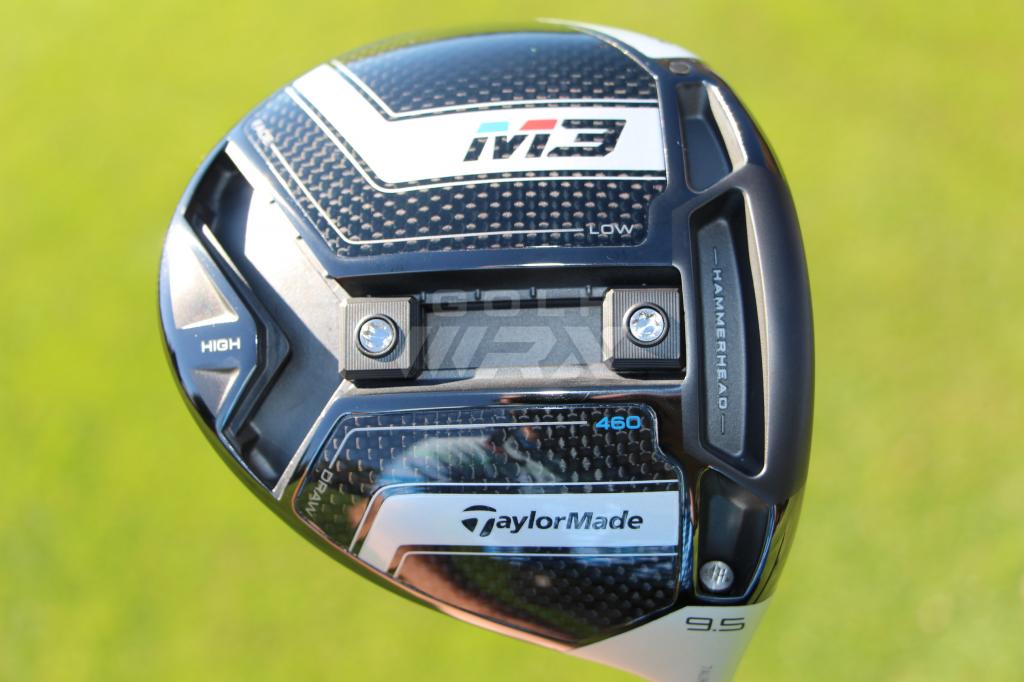
Out with the T-track, in with the Y-track.
Rather than having two independent swing weight tracks, as with the 2016 and 2017 M1 drivers, the M3 drivers have one track (it houses two 11-gram weights) that’s connected and allows for more control over front-to-back CG adjustments, and heel-to-toe CG adjustments.
Overall, there’s 1,000 different CG configurations, according to TaylorMade, and the Y-track allows the CG to move 36 percent further back in the most rearward weight settings, thus boosting the MOI (moment of inertia) by 10 percent. Front-to-back CG movement was also increased by 83 percent, says TaylorMade. The curvature of the sole is flatter than previous M1 drivers, meaning CG is lower in the clubhead regardless of the weight settings.

Additionally, the loft sleeve allows for 12 different positions and 4 degrees of change. Stock heads for right-handed players will be 8.5, 9.5, 10.5 and 12 degrees, while left-handed options include 9.5 and 10.5 degree heads.
TaylorMade M3 440 ($499)
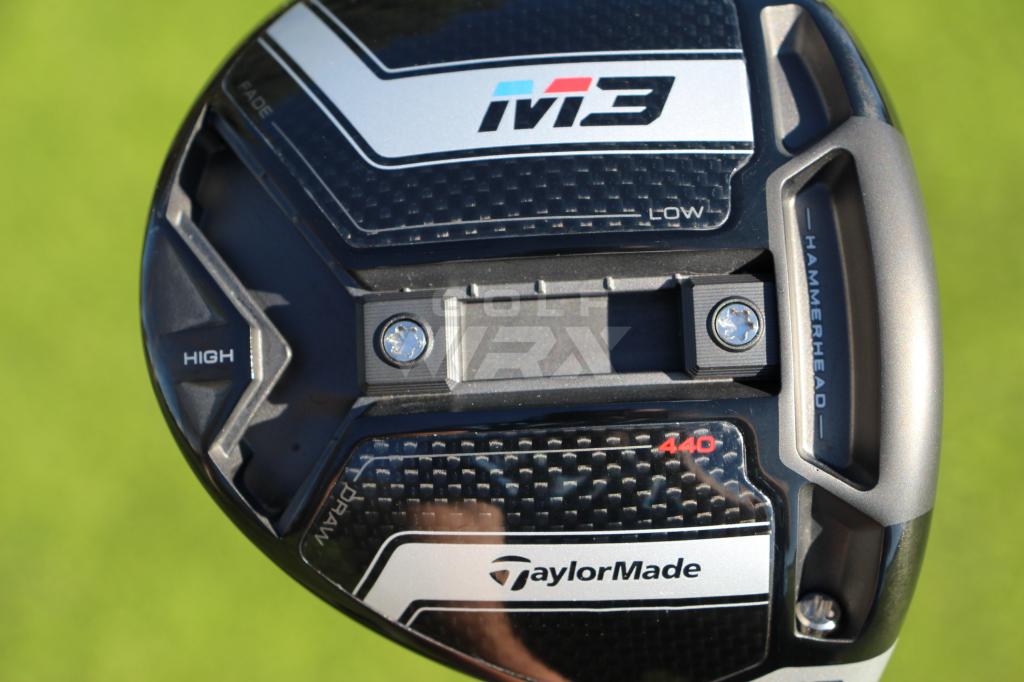
The CG adjustable M3 driver head will also be available in a 440cc version, which has a slightly more compact look and a deeper face. Like the 460 version, it will come stock with Mitsubishi’s Tensei CK Red (high launch), Blue (mid-launch) or White (low-launch) shafts in R, S and X flexes and a Lamkin UTx cord grip. Additional shafts are available at no upcharge.
The M3 440 drivers are a right-handed-only option and will come in 9 and 10-degree lofts. See more photos here.
TaylorMade M3 fairways ($299)
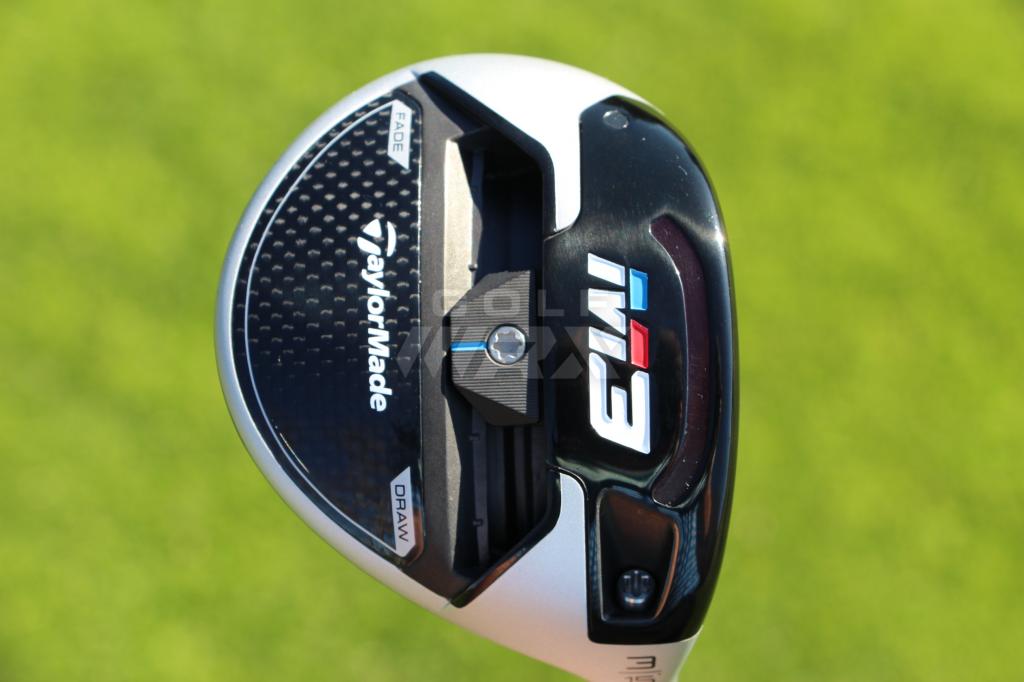
The CG-adjustable M3 fairway woods are more adjustable than the M1 2017 fairway woods because the sliding weight now measures 29 grams instead of 25 grams. Also, the fairway woods are now constructed with 40 stainless steel bodies, Ni-Co C300 faces and the new 5-layer crown that appears in the M3 and M4 driver heads. To produce the lower spin ball flight that better players prefer, the moveable weight track was pushed 1mm toward the face; the composite crown also saved 8 grams from the top of the club head, and it was displaced low and forward in the head.
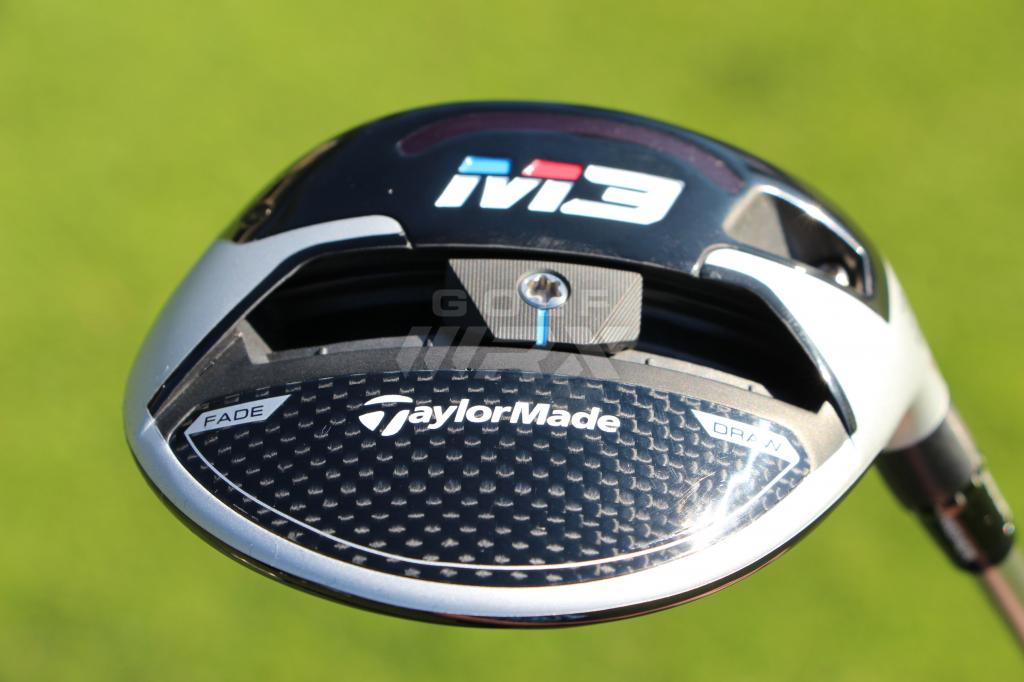
For better turf interaction, TaylorMade designed what it calls an “overhang” that extends the length of the track to improve playability. The speed pocket behind the face, which helps boost ball speed and promotes face-flex, is longer than in the M1 2017 fairways. The changes are said to lead to more ball speed on mishits low on the face, and less backspin, too.
Available lofts for the M3 fairway woods include 15, 17 and 19 degrees for right-handers, and 15 and 19 degrees for lefties. Stock shafts are Mitsubishi’s Tensei Blue (A, R, S and X flexes).
TaylorMade M3 rescues ($249)
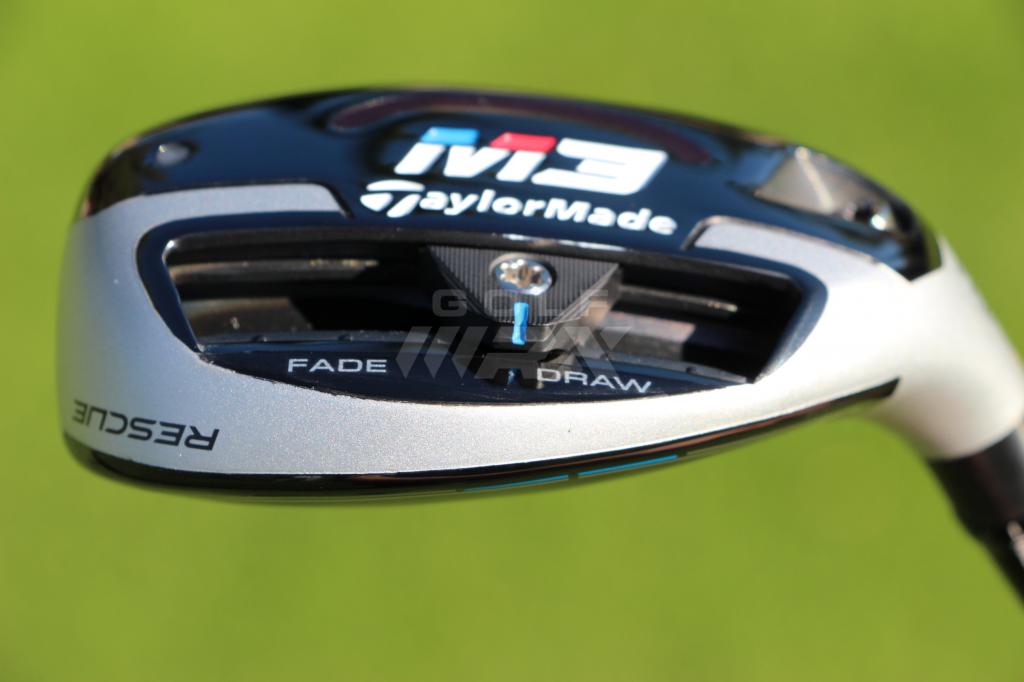
The sliding weight in the M3 rescue clubs weighs 30 grams, instead of the 27-gram weight that was in the M1 2017 rescues. They will come stock with Mitsubishi Rensei Blue hybrid shaft (R, S and X flexes), and will be available in 17, 19, 21 and 24 degree heads for righties, and 19 and 21-degree options for lefties.
TaylorMade M4 driver ($429)
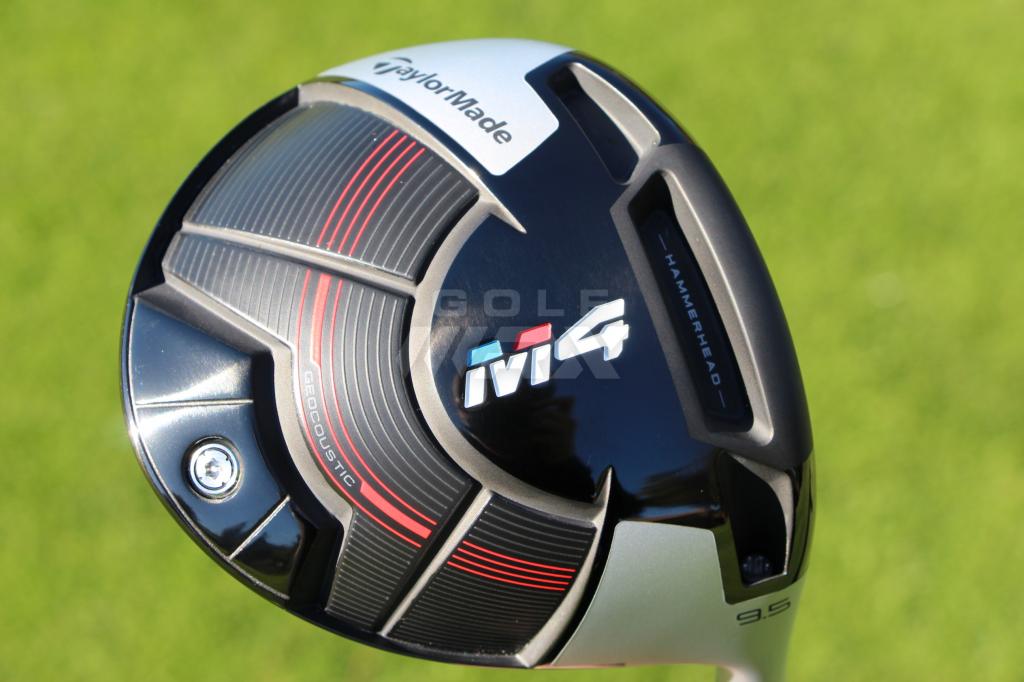
Like the M2 drivers of yesteryear, the M4 drivers are the more forgiving ying to the M3’s yang. They feature the same Twist Face and Hammerhead technologies as the M3, but they also use the familiar “Geocoustic” technology as seen in the M2 drivers; the Geocoustic designs use geometry to produce more forgiveness and better acoustics.
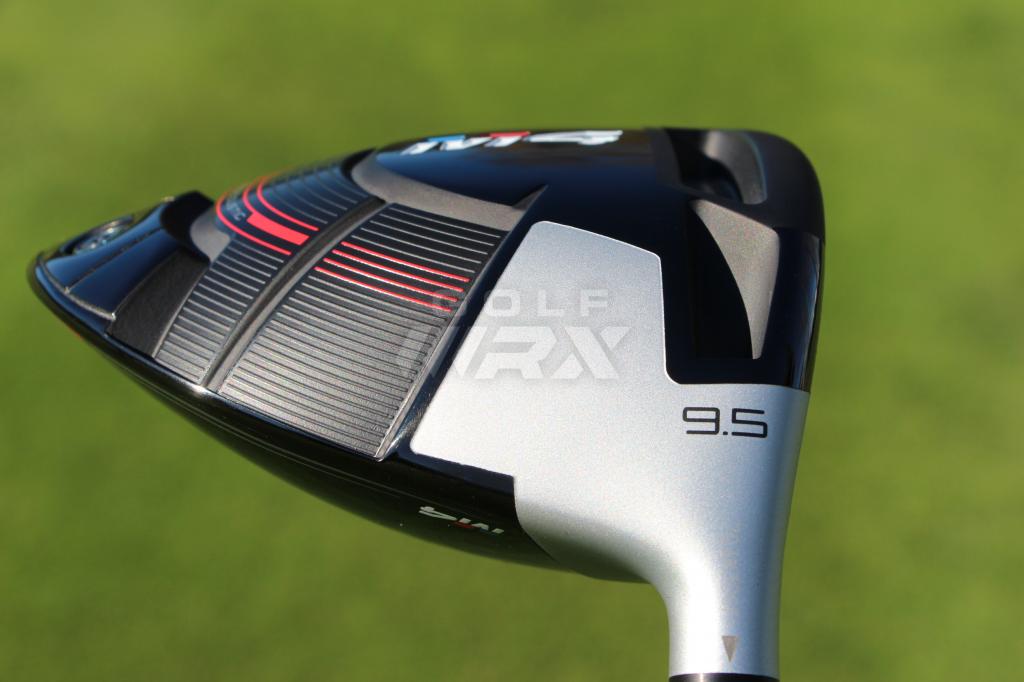
Overall, the M4 drivers have a lower and more rearward CG compared to the M2 2017 drivers. The M4 has a redesigned face that saves 8 grams compared to the M2 2017 drivers, which means it’s made thinner for more ball speed, and allows that discretionary weight to be placed low and rearward in the head for higher MOI. The mass pad on the rearward portion of the sole has also been increased from 22 to 41 grams — for golfers, that means more forgiveness and a higher launch.
For righties, the M4 drivers will be available in 8.5, 9.5, 10.5 and 12 degree heads, and 9.5 and 10.5 degree heads for lefties. Stock shafts are Fujikura’s Atmos Red 6X, 5S, 5R and 5A shafts.
TaylorMade is also offering an M4 D-Type, which has an inherent draw-bias for those struggling to mend a slice. That will be available in 9.5, 10.5 and 12 degree options for righties and 9.5 and 10.5 degree heads for lefties. The M4 D-Type will come stock with Matrix’s Platinum White Tie 55 (S and R flex) and 45 (A and L flex) shafts.
TaylorMade M4 fairways ($249)
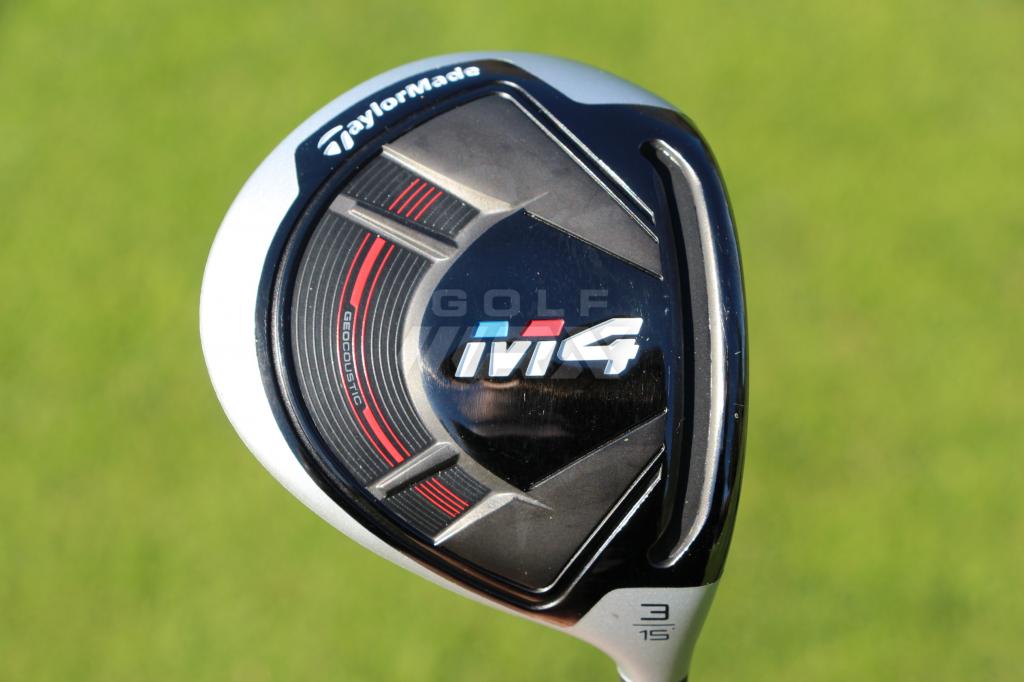
The M4 fairway woods are made to be more forgiving than the M3 fairways, and even more forgiving than the previous M2 fairways. The rear mass pads have been separated out toward the toe and heel to preserve ball speeds on off-center hits. Also, the thinner and stronger No-Co C300 faces help to increase COR (coefficient of restitution) for higher ball speeds on off-center strikes.
There is also an M4 Tour head that’s available, which measures 156cc instead of the normal 172cc M4 head. It has a deeper face and an obviously more compact look — it will produce lower launch and more workability, according to TaylorMade.
Right-hand M4 (15, 16.5, 18, 21 and 24 degrees heads) and left-hand M4 (15, 16.5 and 18 degree heads) fairways will come stock with Fujikura’s Atmos Red shafts. Right-hand M4 Tour (15 and 18 degrees) fairways will come stock with Mitsubishi’s Tensei Blue shafts.
TaylorMade M4 rescues ($219)
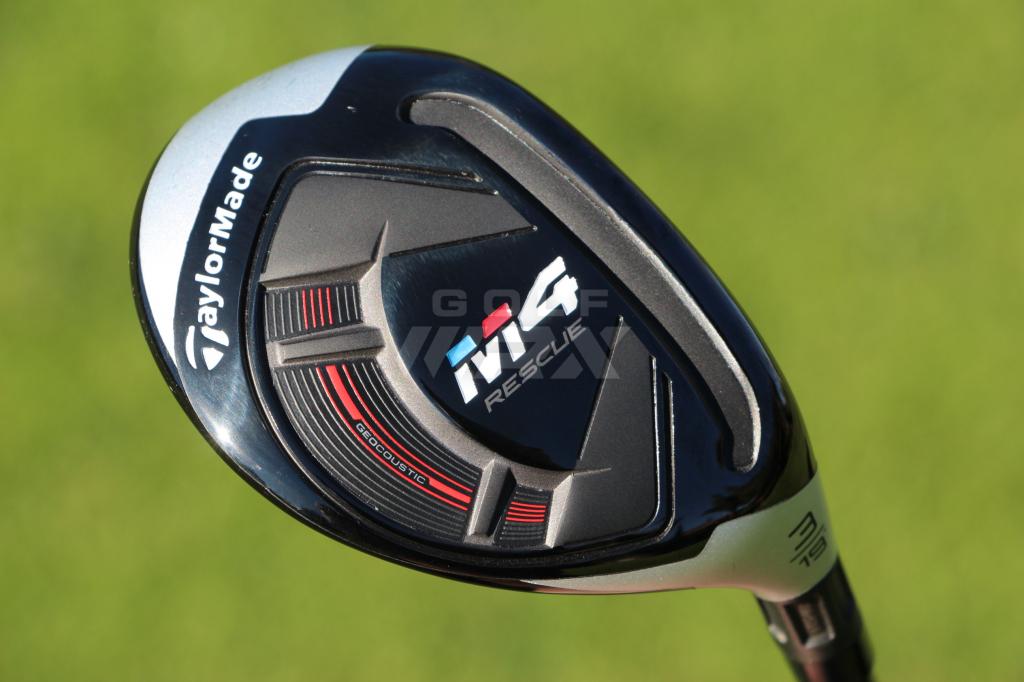
The TaylorMade M4 rescues have also been made more forgiving due to the split rear mass pad to help on off-center strikes, and they have a speed pocket for higher ball speeds across the face
Right-hand M4 rescues (19, 22, 25 and 28 degrees) and left-hand M4 Rescues (19, 22 and 25 degrees) will come stock with Fujikura’s Atmos Red shafts.
Click here for more photos and discussion of the M3 and M4 metalwoods.
Listen below for more on Twist Face from Brian Bazzel, VP of Product Creation at TaylorMade:
- LIKE450
- LEGIT55
- WOW39
- LOL21
- IDHT10
- FLOP36
- OB29
- SHANK220
Equipment
Coolest thing for sale in the GolfWRX Classifieds (4/18/24): Ping PLD Limited Anser – 1988 Open Championship – #2 of only 88 Made
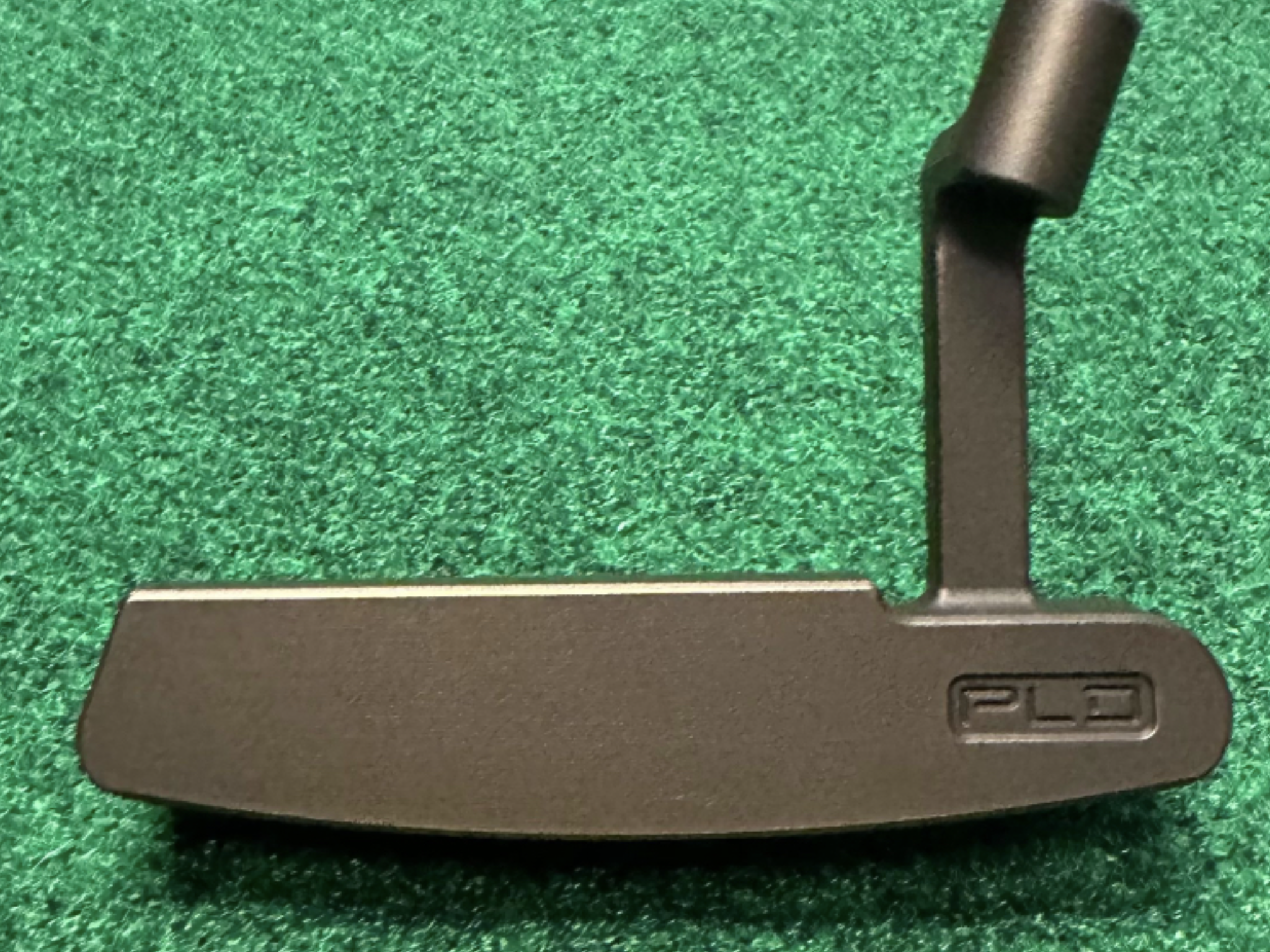
At GolfWRX, we are a community of like-minded individuals that all experience and express our enjoyment of the game in many ways.
It’s that sense of community that drives day-to-day interactions in the forums on topics that range from best driver to what marker you use to mark your ball. It even allows us to share another thing we all love – buying and selling equipment.
Currently, in our GolfWRX buy/sell/trade (BST) forum, there is a listing for a Ping PLD Limited Anser – 1988 Open Championship – #2 of only 88 Made.
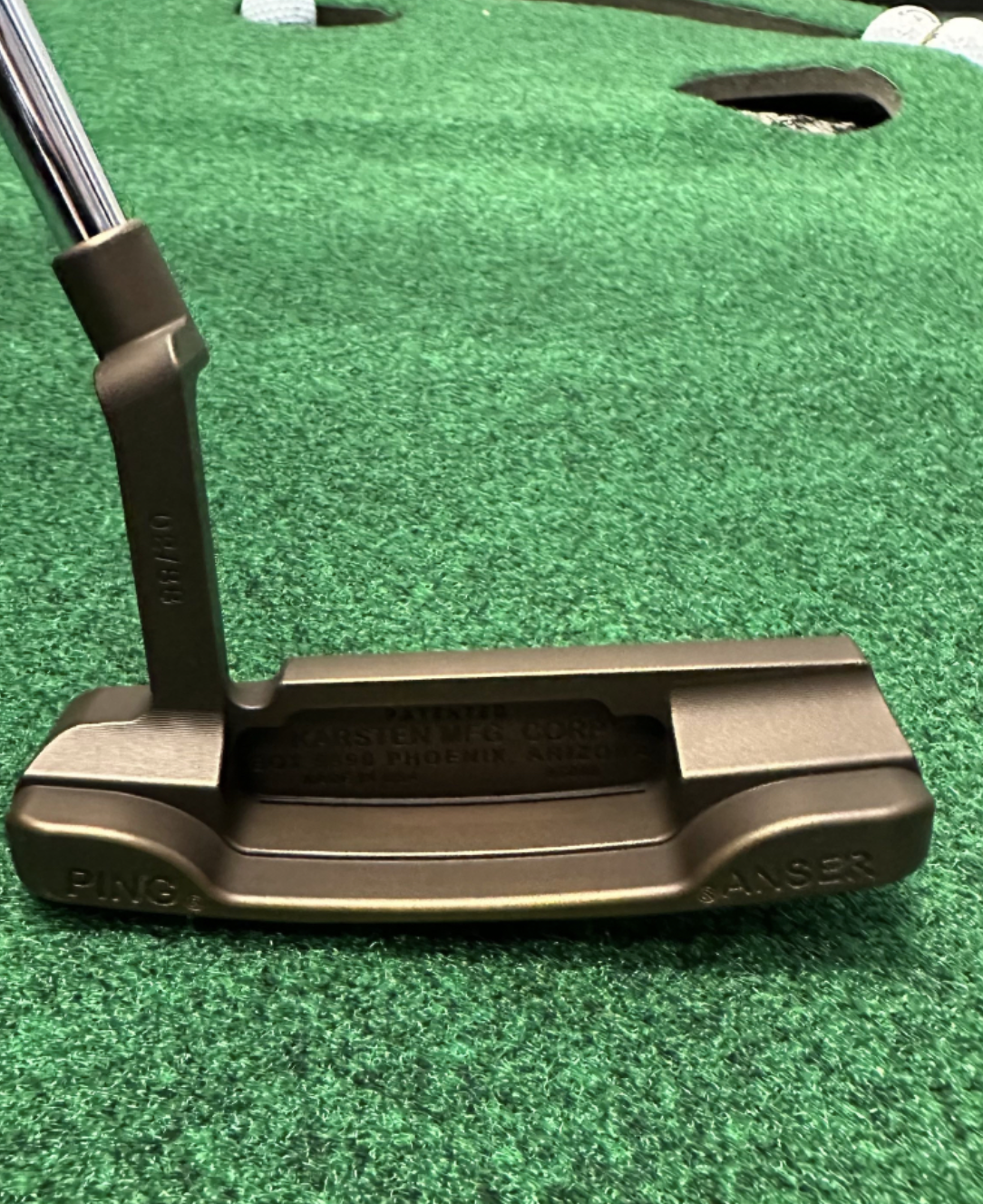
From the seller: (@DLong72): “Ping PLD Limited Anser – 1988 Open Championship – #2 of only 88 Made. ?: $1150. ?? 100% milled collectors item from the limited releases commemorating when Ping putters won every major in 1988 (88 putters made). This was the model Seve Ballesteros used to win the 1988 Open Championship. Condition is brand new, never gamed, everything is in the original packaging as it came. Putter features the iconic sound slot.
Specs/ Additional Details
-100% Milled, Aluminum/Bronze Alloy (310g)
-Original Anser Design
-PING PP58 Grip
-Putter is built to standard specs.”
To check out the full listing in our BST forum, head through the link: Ping PLD Limited Anser – 1988 Open Championship – #2 of only 88 Made
This is the most impressive current listing from the GolfWRX BST, and if you are curious about the rules to participate in the BST Forum you can check them out here: GolfWRX BST Rules
- LIKE0
- LEGIT0
- WOW0
- LOL0
- IDHT0
- FLOP0
- OB0
- SHANK0
Equipment
Inside Collin Morikawa’s recent golf ball, driver, 3-wood, and “Proto” iron changes
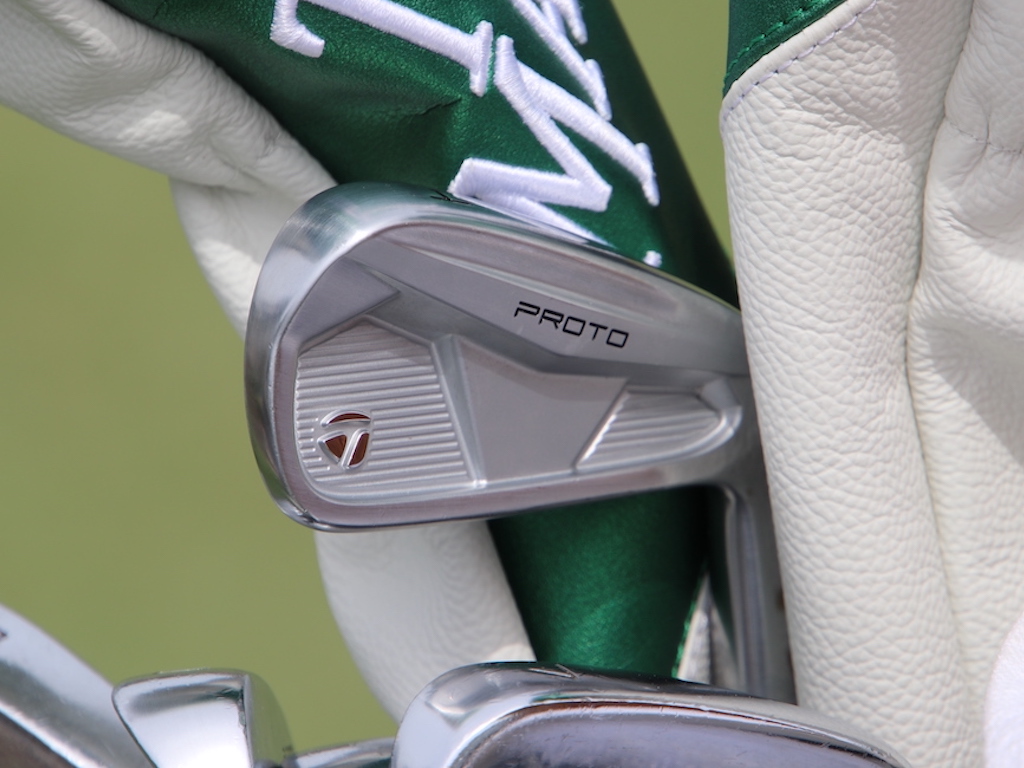
As you probably know by now, Collin Morikawa switched putters after the first round of The Masters, and he ultimately went on to finish T3.
The putter was far from the only change he made last week, however, and his bag is continuing to change this week at the 2024 RBC Heritage.
On the range of The Masters, Morikawa worked closely with Adrian Reitveld, TaylorMade’s Senior Manager of Tour at TaylorMade, to find the perfect driver and 3-wood setups.
Morikawa started off 2024 by switching into TaylorMade’s Qi10 Max driver, but since went back to his faithful TaylorMade SIM – yes, the original SIM from 2020. Somehow, some way, it seems Morikawa always ends up back in that driver, which he used to win the 2020 PGA Championship, and the 2021 Open Championship.
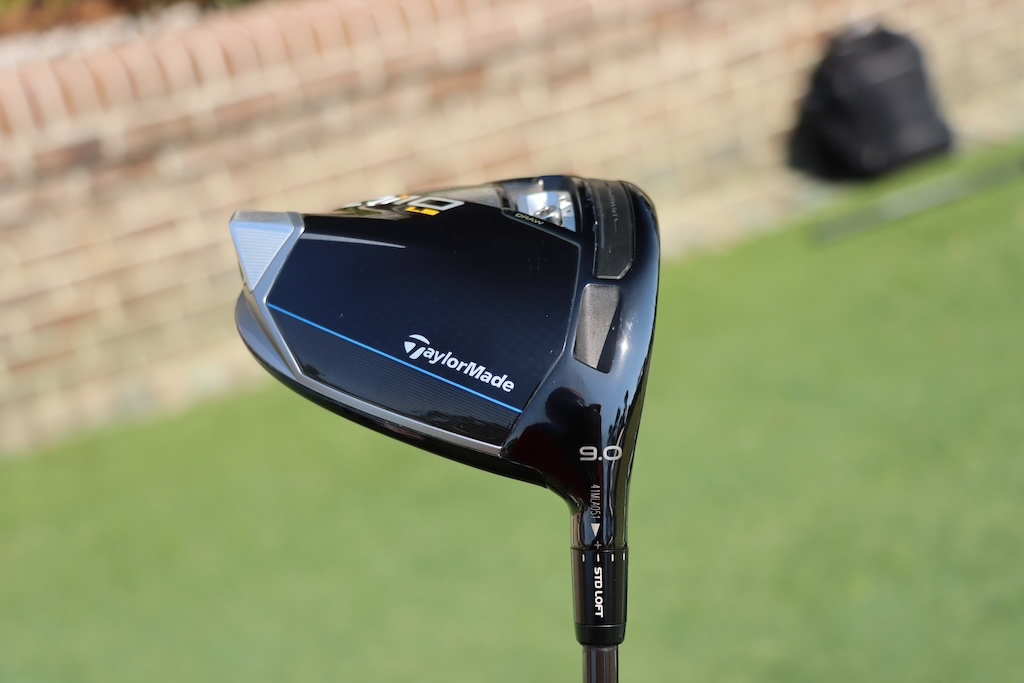
At The Masters, however, Rietveld said the duo found the driver head that allowed “zero compromise” on Morikawa’s preferred fade flight and spin. To match his preferences, they landed on a TaylorMade Qi10 LS 9-degree head, and the lie angle is a touch flatter than his former SIM.
“It’s faster than his gamer, and I think what we found is it fits his desired shot shape, with zero compromise” Rietveld told GolfWRX.com on Wednesday at the RBC Heritage.
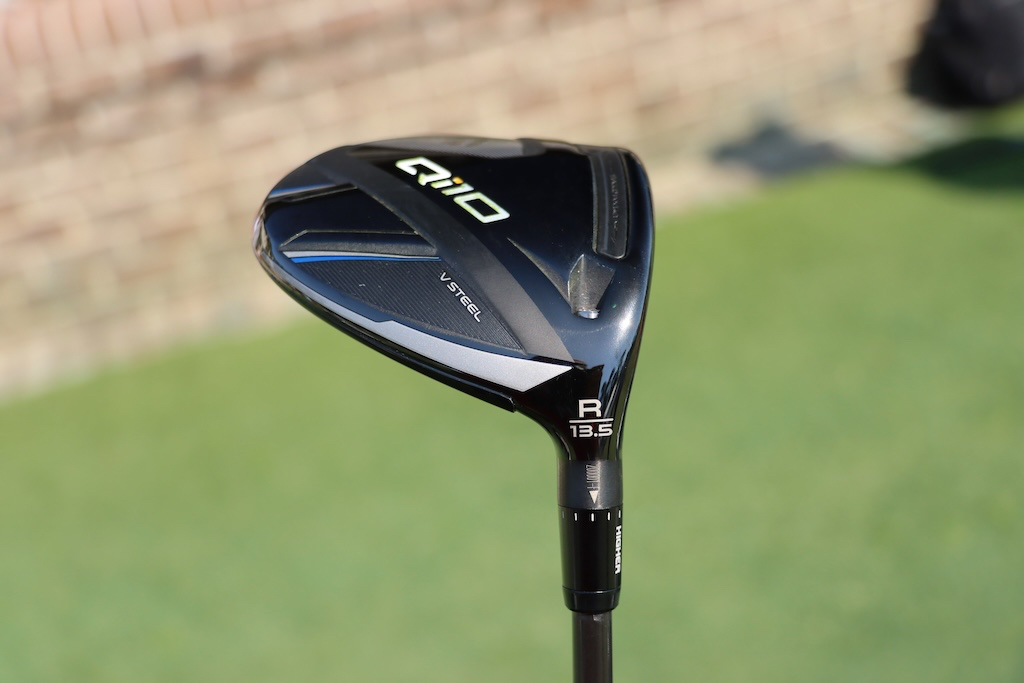
Then, to replace his former SIM rocket 3-wood, Morikawa decided to switch into the TaylorMade Qi10 core model 13.5-degree rocket head, with an adjustable hosel.
“He likes the spin characteristics of that head,” Rietveld said. “Now he’s interesting because with Collin, you can turn up at a tournament, and you look at his 3-wood, and he’s changed the setting. One day there’s more loft on it, one day there’s less loft on it. He’s that type of guy. He’s not scared to use the adjustability of the club.
“And I think he felt our titanium head didn’t spin as low as his original SIM. So we did some work with the other head, just because he liked the feel of it. It was a little high launching, so we fit him into something with less loft. It’s a naughty little piece of equipment.”

In addition to the driver and fairway wood changes, Morikawa also debuted his new “MySymbol” jersey No. 5 TP5x golf ball at The Masters. Morikawa’s choice of symbols is likely tied to his love of the Los Angeles Dodgers baseball team.
Not enough changes for you? There’s one more.

On Wednesday at the 2024 RBC Heritage, Morikawa was spotted with a new TaylorMade “Proto” 4-iron in the bag. If you recall, it’s the same model that Rory McIlroy debuted at the 2024 Valero Texas Open.
According to Morikawa, the new Proto 4-iron will replace his old P-770 hollow-bodied 4-iron.
“I used to hit my P-770 on a string, but sometimes the distance would be a little unpredictable,” Morikawa told GolfWRX.com. “This one launches a touch higher, and I feel I can predict the distance better. I know Rory replaced his P-760 with it. I’m liking it so far.”
See Morikawa’s full WITB from the 2024 RBC Heritage here.
- LIKE23
- LEGIT2
- WOW1
- LOL3
- IDHT1
- FLOP1
- OB2
- SHANK1
Equipment
Why Rory McIlroy will likely use the new TaylorMade BRNR Mini Driver Copper at the RBC Heritage
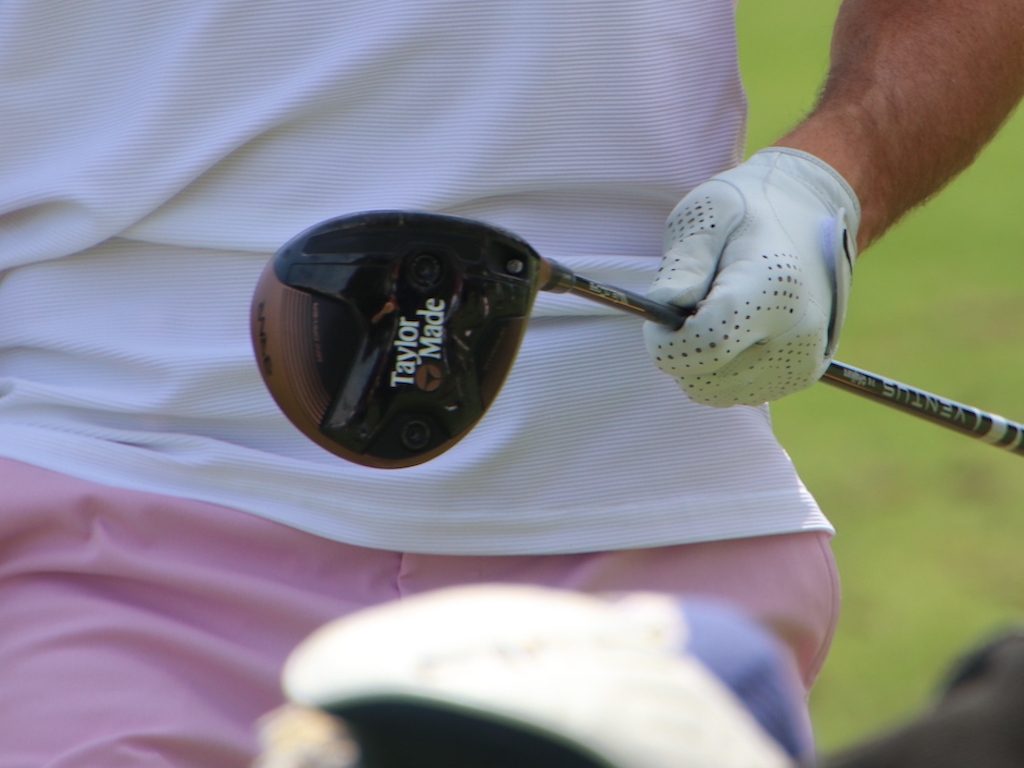
Although we spotted Rory McIlroy testing the new TaylorMade BRNR Mini Driver Copper last week during practice rounds at the Masters, he ultimately didn’t decide to use the club in competition.
It seems that will change this week at the 2024 RBC Heritage, played at the short-and-tight Harbour Town Golf Links in Hilton Head.
When asked on Wednesday following his morning Pro-Am if he’d be using the new, nostalgic BRNR Copper this week, McIlroy said, “I think so.”
“I like it,” McIlroy told GolfWRX.com on Tuesday regarding the BRNR. “This would be a good week for it.”
View this post on Instagram
According to Adrian Rietveld, the Senior Manager of Tour at TaylorMade, the BRNR Mini Driver can help McIlroy position himself properly off the tee at the tight layout.
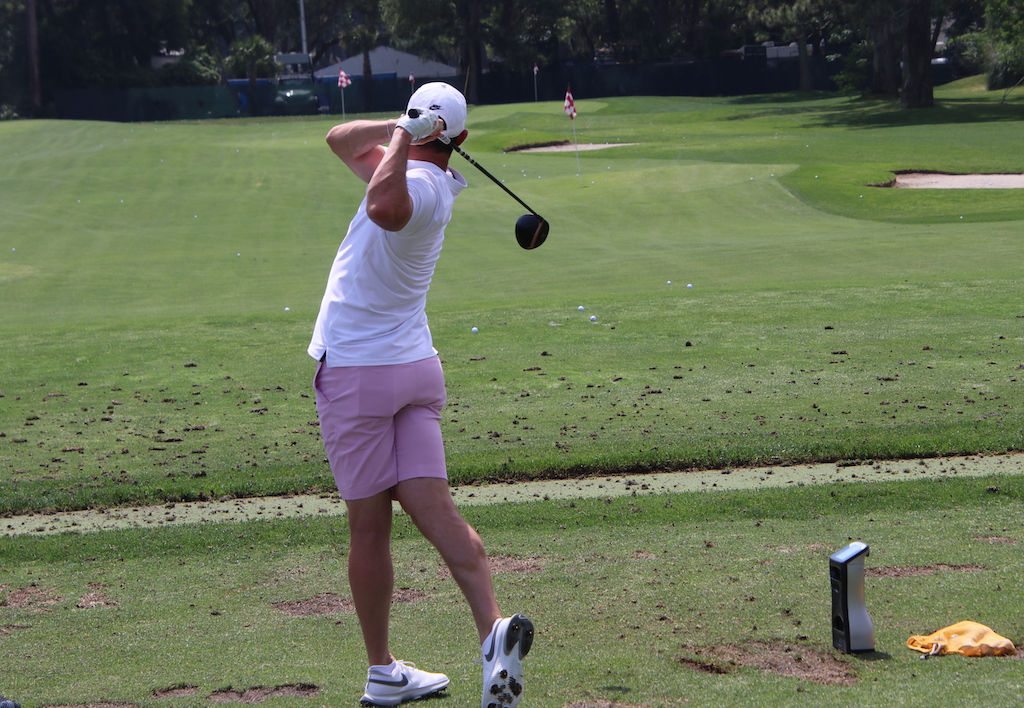
Here’s what Rietveld told GolfWRX.com on Wednesday:
“For someone like Rory, who’s that long at the top end of the bag, and then you put him on a course like Harbour Town, it’s tough off the tee. It’s tight into the greens, and you have to put yourself in position off the tee to have a shot into the green. It kind of reminds me of Valderrama in Spain, where you can be in the fairway and have no shot into the green.
“I’m caddying for Tommy [Fleetwood] this week, so I was walking the course last night and looking at a few things. There’s just such a small margin for error. You can be standing in the fairway at 300 yards and have a shot, but at 320 you don’t. So if you don’t hit a perfect shot, you could be stuck behind a tree. And then if you’re back at 280, it might be a really tough shot into the small greens.
“So for Rory [with the BRNR], it’s a nice course-specific golf club for him. He’s got both shots with it; he can move it right-to-left or left-to-right. And the main thing about this club has been the accuracy and the dispersion with it. I mean, it’s been amazing for Tommy.
“This was the first event Tommy used a BRNR last year, and I remember talking to him about it, and he said he couldn’t wait to play it at Augusta next year. And he just never took it out of the bag because he’s so comfortable with it, and hitting it off the deck.
“So you look at Rory, and you want to have the tools working to your advantage out here, and the driver could hand-cuff him a bit with all of the shots you’d have to manufacture.”
So, although McIlroy might not be making a permanent switch into the new TaylorMade BRNR Mini Driver Copper, he’s likely to switch into it this week.
His version is lofted at 13.5 degrees, and equipped with a Fujikura Ventus Black 7X shaft.
See more photos of Rory testing the BRNR Mini here
- LIKE24
- LEGIT1
- WOW0
- LOL2
- IDHT0
- FLOP0
- OB1
- SHANK3
-

 19th Hole1 week ago
19th Hole1 week agoDave Portnoy places monstrous outright bet for the 2024 Masters
-

 19th Hole2 weeks ago
19th Hole2 weeks agoThings got heated at the Houston Open between Tony Finau and Alejandro Tosti. Here’s why
-

 19th Hole1 week ago
19th Hole1 week agoTiger Woods arrives at 2024 Masters equipped with a putter that may surprise you
-

 19th Hole2 weeks ago
19th Hole2 weeks agoReport: Tiger Woods has ‘eliminated sex’ in preparation for the 2024 Masters
-

 19th Hole4 days ago
19th Hole4 days agoTwo star names reportedly blanked Jon Rahm all week at the Masters
-

 19th Hole3 days ago
19th Hole3 days agoNeal Shipley presser ends in awkward fashion after reporter claims Tiger handed him note on 8th fairway
-

 19th Hole2 days ago
19th Hole2 days agoReport: LIV Golf identifies latest star name they hope to sign to breakaway tour
-

 19th Hole2 weeks ago
19th Hole2 weeks agoAddiction, spinal fusion, and scam artists – Everything Anthony Kim revealed in candid interview with David Feherty





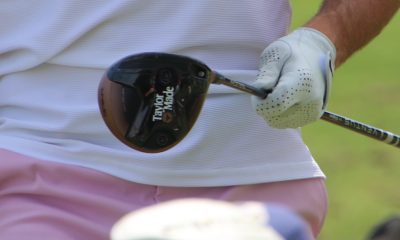

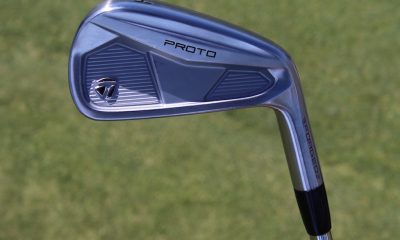

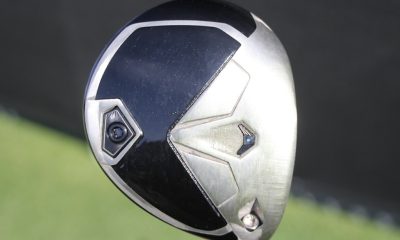



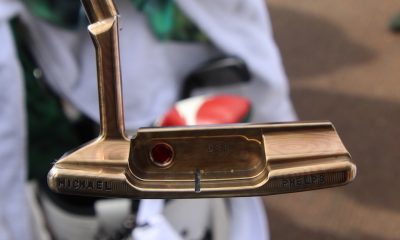














smz
Jan 1, 2019 at 10:40 pm
Twist Face = Bullfeathers… read that…. !!!!!
S
Jan 18, 2018 at 2:42 pm
According to an article from Golf Digest this month Tiger liked M3 440 9 degree the best. It sounded like next time he shows up he would be equipped with the TM blade irons too.
ImaPlayah
Jan 9, 2018 at 10:08 pm
I’m okay with the Twist Face but if you don’t know your swing and need to compensate with weight shifting you are in trouble.
My Current WITB:
Ping G LS Tec 9° – Mitsubishi Kuro Kage DC TiNi 60 @ 44.75″ – X
Ping G 5 Wood @ 16.5° – Ping Tour 65 + 1/2″ – X
Ping G 7 Wood @ 21.5° – Ping Tour 80 – X
Ping i200 (5-PW) – KBS Tour Stiff + 1/2″
Ping Glide 2.0 – SS 50°/ WS 56°@ 55°/ TS 60°- Ping AWT 2.0 Wedge + 1/2″
Ping Redwood D66 (Starshot) – 34″ – Ping PP58 (Midsize) + 5 Wraps
Donald Trump Rules
Jan 9, 2018 at 5:34 pm
Scores have not improved since persimmon wood club days. Just saying…..
S
Jan 8, 2018 at 4:51 pm
Interesting… I own a R15 430. My miss on the high toe goes high right and the low heel left and low. The gear effect is there but very minute. Maybe the shaft is a bit stiffer than ideal. But I’d like to keep it that way because everything else is better for me – ball height, distance, and dispersion.
geohogan
Feb 18, 2019 at 7:43 pm
@S; a properly designed stiff tip shaft obviates “gear effect”
As long as OEM, continue to use cheap golf shafts they will find a new gimmick to compensate for the crap golf shafts.
Nick
Jan 8, 2018 at 12:01 pm
Is it just me or does anyone else find the name, the look of the logo is copied from BMW. Then calling the base hammerhead (which is a famous corner on the Top Gear track) sure makes me wonder what kind of petrol head took the helm at TMs marketing department….irrespective of performance, I thought it was a joke. Apparently not… so when buying a BMW M3/M4 your Dealer can chuck in a set of golf clubs…surely one of the lamest cameos.
Donald Trump Rules
Jan 6, 2018 at 9:02 pm
TM Engineer 1: We are going to twist the face of the new driver and call it “Twist Face”.
TM Engineer 2: But twist on the face of the club is bad.
TM Engineer 1: Who cares. People will buy anything if we tell them its better and will go farther. We will just claim “Better accuracy and 7 more yards”.
TM Engineer 2: Sounds good to me. They all bought into white head drivers and speed slots. Lets stamp it.
Steve
Jan 8, 2018 at 8:05 am
Yeah because if TM clubs perform worse then everyone will buy them. Your argument makes perfect sense. FYI, when players are given a choice, they usually play TM drivers.
But please, continue with your 2013 narrative.
Steve
Feb 24, 2018 at 8:18 pm
Have you noticed how many PGA and Champions Tour guys play TM? The Champion Tours guys typically just play clubs they like because very few have equipment deals. TM driver are just better. Callaway is decent. Titleist is terrible and has been for awhile. Titleist drivers are lousy guys like Dufner now play M4’s…
The TM hate is really stupid at this point. Let it go.
The59'er
Jan 6, 2018 at 7:12 pm
Interesting play, wonder if it will actually help the average country club hack.
Donald Trump Rules
Jan 9, 2018 at 5:33 pm
Has any club in history helped the average hack?
NO.
Because theres no club problem, its a swing problem.
scott
Jan 6, 2018 at 5:07 pm
Hey, Tursky …. you posted this article on January 2nd with no comments section and you finally opened it up on January 5th. What’s the problem? Were you hiding?
R.Neal
Jan 6, 2018 at 8:32 am
Now if TaylorMade would make the adapter screw that’s harder than oh say,butter,I might go back.
Interesting concept though.
Joro
Jan 5, 2018 at 3:52 pm
This is really interesting. In the 70s when I was a Woodmaker at Cobra making a lot of Woods, real Woods for the Pros I had one guy say the face looked hooked at the Toe and he didn’t like to see the Bulge at the Heel. Originally I just took a bit off the lower heel but that was Bogus, so I tried angling the Bulge to go from the top of the Toe and the bottom of the Heel. The look was better with a more open toe and no Heel bulge. He like it and raved about how straight it was and longer also. Funny that 40 years ago is now. I have often wondered why they haven’t tried that before now. My believe was that distortion of the shaft leveled out the Bulge where a normal straight Bulge pointed toe down. Very interesting, and provocative.
Scott
Jan 8, 2018 at 10:18 am
Your comments are interesting. Did any other pros try your grind?
Joro
Jan 9, 2018 at 10:37 pm
yes, I did all the tour stuff that way and had nothing but good comments, and from some of the top players.
d
Jan 5, 2018 at 12:43 pm
This is pretty interesting. As soon as I saw “twist face”, I knew what the intent would be. As weird or bizarre as it might seem, this totally makes sense.